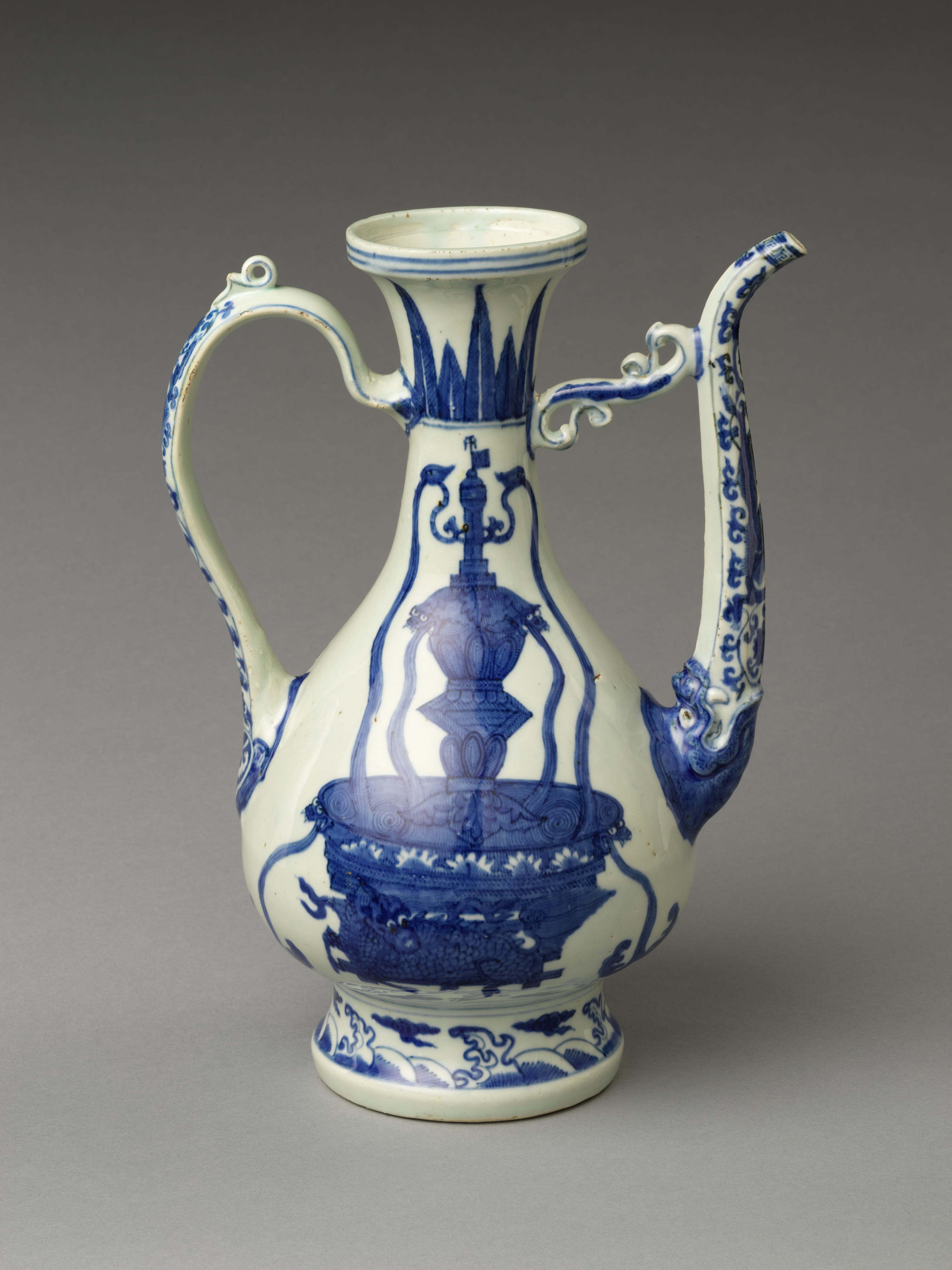“Magic Fountain” ewer
Not on view
This ewer illustrates the vivid artistic and cultural exchange between China, the Middle East, and Europe in the sixteenth and seventeenth centuries. The pear-shaped ewer with curving spout and handle can be traced back to metal pitchers from the Middle East. Successfully rendering this foreign design with porcelain, from the fourteenth century onward Chinese potters made this type of ewer for both domestic and foreign markets. The heavily potted body, slightly bluish glaze, and rich cobalt blue décor are characteristic features of Jingdezhen porcelain from the mid-sixteenth century, which helps to date this piece. The “magic fountain” motif likely has a European source. In 1952, the late Sir Percival David connected this image to the legendary silver wine fountain designed by a Parisian goldsmith Guillaume Boucher for the Mongol Khan Mongke (r. 1251–1259) while Boucher served at Mongke’s court in Karakorum in present-day Mongolia. Scholars have since suggested that the image was more likely to have been inspired by a sixteenth-century European print, painting, or tapestry and were first commissioned by Jesuit missionaries in China. When such vessels reached Europe, they were highly valued and have even appeared in still life paintings, such as one by Williem Kalf (1619–1693) now in the collection of Thyssen-Bornemisza National Museum, Madrid
This image cannot be enlarged, viewed at full screen, or downloaded.
This artwork is meant to be viewed from right to left. Scroll left to view more.



